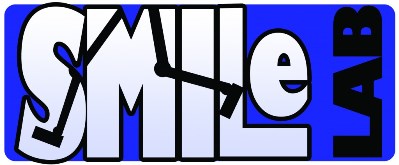The Laboratory focuses on biologically inspired sensory motor integration in dexterous manipulation. The research is focused on:
- Brain Machine Interfaces (BMI)
- Neural spike train analysis
- Computational motor control models for BMI
- Control of rhythmic movements using coupled neural oscillators.
- Human motor control of manipulative hand movements
Brain Machine Interfaces (BMIs) uses the activity of brain cells that modulate their firing rates as a function of the movement variables. The ultimate goal of BMIs is to restore motor functions in severely paralyzed patients by extracting those signals from the neuronal modulations and using them to control prosthetic devices. Considerable progress has been made in recent years in characterizing the neuronal encoding of movement and in extracting specific movement variables, such as hand velocity and position. Experiments with Brain-Machine Interfaces (BMIs) provide a unique opportunity to investigate neural processing involved in performing novel motor tasks.
Spike trains analysis is used to estimate Overall Neural Modulations and Task-related Neural Modulations. Overall Neural modulations are associated with the variance of the underlying rate, and expressed as a percent of the total variance in the spike trains. Under common assumptions the variance of the underlying rate can be estimated from the statistics of the binned spike counts. Task related modulations are quantified by the coefficient of determination between the neural activity and the trajectories of the cursor and target. Our key results, based on BMI experiments with monkeys, is that the extent of neural modulations increases abruptly upon starting to operate the BMI, especially after the monkeys stopped moving their hands (brain control without hand movements). This increase was NOT matched by a similar increase in task related modulations, so the nature of the enhanced modulations remains unknown. Furthermore, as training progressed and performance improved, the enhanced modulations subsided. We model these phenomena using the framework of optimal control and relate the enhanced neural modulations to the changes in the variance of the internally estimated signals.
Thus our goal is to explain the mechanisms underlying the increase in neural modulations with no matching increase in task related modulations. We have demonstrated that this can be explained within the framework of optimal feedback control.
The control of rhythmic movements using coupled neural oscillators is explored for controlling rhythmic movements like yoyo-playing and locomotion. The research is based on the concept of Central Pattern Generators, which are circuits of coupled oscillators used to model the generation of rhythmic movements in biological systems. The coupling enforces unique frequency and constant phase-relationships between the oscillators. We developed an osciallatory based control of yoyo-playing that uses the once per cycle signal that occurs when the yoyo reaches the bottom. Current research extends this result to locomotion.
Manipulative hand movements are investigated using a Data-Glove and characterized to identify movement invariant, which facilitate movement recognition and generation. Our research revealed linear coordination among finger joints during execution of simultaneous hand movements. This is a novel finding, which contrasts coordination in arm movements and coordination in slow finger movements. The linear nature of the joint-space trajectories provides a physically meaningful characterization of simultaneous hand movements and enables their successful recognition using adaptive neural networks.



